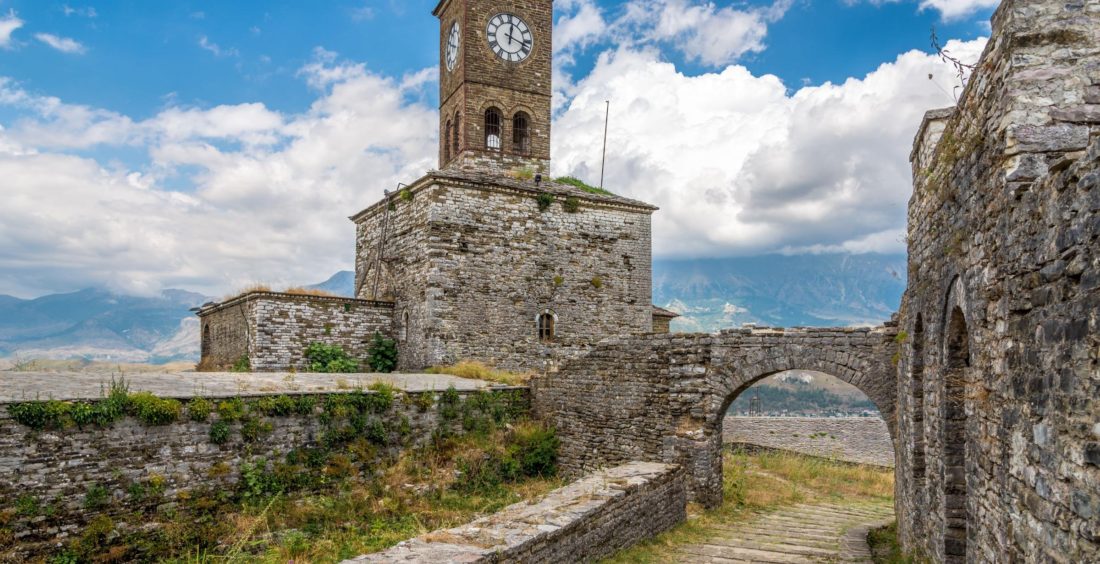Gjirokastra, or as it is also known “the stone city,” is one of the most beautiful cities in the south of Albania. With its multifaceted values, this museum-like city was one of the first to be accepted into UNESCO. And when we talk about its values, we must mention that the main symbol of the city is its castle.
The Castle of Gjirokastër is closely connected to the city itself. It is situated on a hill, slightly detached from the Gjerë Mountain, built at a vantage point about 370 meters above sea level. Compared to other medieval castles in the country, this one is smaller in surface area but is better preserved. Its width is 75 meters, and its length is 500 meters. To increase the resistance of its walls, five powerful towers were built.
Over the years, the castle has undergone modifications and expansions. Around 1490, extensive improvements were made by Sultan Bayezid II. Then, in 1811, Ali Pasha of Tepelena added many elements, including the Clock Tower on the eastern side. He also completed the fortification of the cliff area and built the Sopot water supply system, which brought water to the castle from about 12 kilometers away.
At the entrance of the fortress, there is a cannon gallery and a collection of weapons gathered from ancient times to World War I and World War II. At the end of this gallery, there is also an Italian tank. Near the walls, in the area where the aircraft stands, a stunning landscape of the entire Drino River valley and the surrounding mountains is unveiled.
With all the values it possesses, the castle is highly attractive to tourists from around the world. For some time now, the Gjirokastër Castle hosts the grand National Folklore Festival, where every four years, the country’s most distinguished singers gather to perform traditional Albanian songs.







 Rruga e Elbasanit, Pallati nr. 111,
Rruga e Elbasanit, Pallati nr. 111,